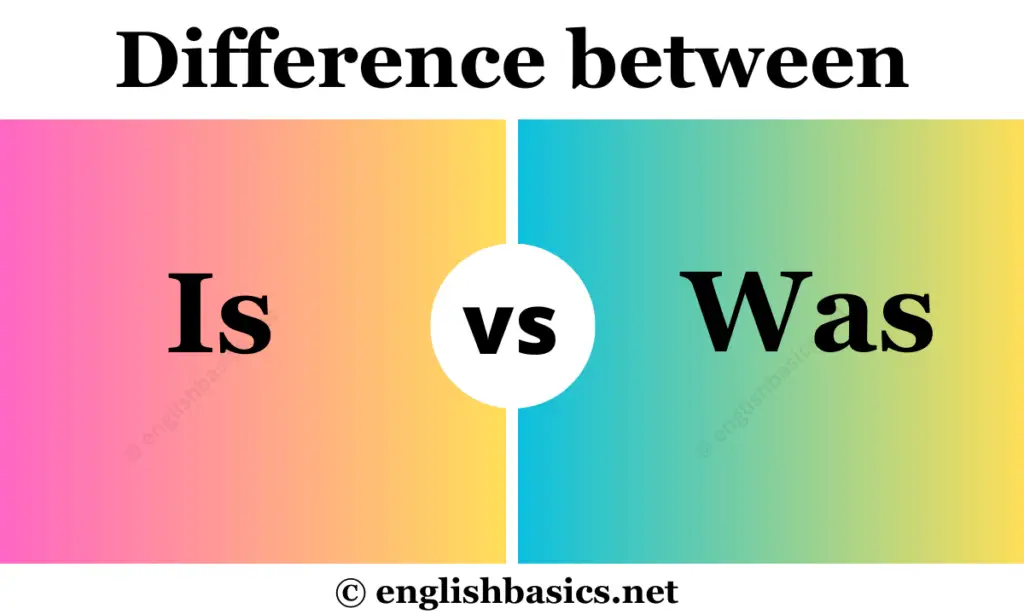If you want to excel in English grammar, then the difference between “is” and “was” is the first and foremost thing you need to be clear about. Do not confuse “is” and “was” as similar words. They are very different in meaning and usage.
“Is” and “was” are both forms of the verb “to be.” The verb “to be” generally means to live or to exist. When we use “is” and “was,” the verb is expressed in different tenses and moods. And they are applied in different contexts.
Let us get a clear understanding of both the words and discuss them in detail.

Is vs Was – Difference
The verb “to be” has many different forms. Two of them being “is” and “was.” The main difference between them would be that “is” is used to indicate the verb in the present tense, and “was” is used to express the verb in the past form. They are both helping or auxiliary verbs having different usages.
Is
“Is” is used when we indicate or express the verb “to be” in the present tense. It is a form of the verb “to be” that is usually used to describe something that is happening at present or is currently taking place. It is used with singular third-person pronouns like he, she, or it. Since it is an auxiliary verb, it is used to form the present continuous tense.
Let us look at some examples;
- She is about to leave the meeting.
- He is jumping on the bed.
- She is swimming in the pool.
“Is” used in the above examples describes ongoing actions in the present continuous tense, and every pronoun is third-person singular.
Another use of “is” is to describe a person’s traits or characteristics. In simple words, “is” can also be used to describe the color, quality, or identity of a person. For example;
- She is a good person.
- He is a new student in the class.
- He is not so fair.
In the above examples, we can see that “is” is used to describe a person’s trait or identity.
Was
On the other hand, “was” is used to express or indicate the verb to be in the past tense. It describes something that is no longer a reality or has already taken place and is over at the present. Since it is also an auxiliary verb, it can be used to form past continuous tense. It uses first-person and third-person singular pronouns like he, she, I, or it.
Let us look at some examples;
- He was running down the aisle.
- She was writing to her classmate.
- He was cooking chicken.
“Was” is also used to describe a person’s characteristics or identity that is no longer present at the moment. For example;
- She was a crybaby.
- She was the captain.
Remember the difference
So we understood that both the words “is” and “was” are forms of the verb to be. However, their usages and functions differ in different contexts. “Is” is a present form, while “was” is the past form.
Also, the plural form of “is” is “are,” and “was” is “were.” Keep these necessary points in mind to enhance your writing skills.